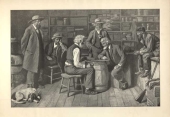The Checker Maven
The World's Most Widely Read Checkers and Draughts Publication
Bob Newell, Editor-in-Chief
Published every Saturday morning in Honolulu, Hawai`i
Noticing missing images? An explanation is here.
Capers on the Kelso, Part 5
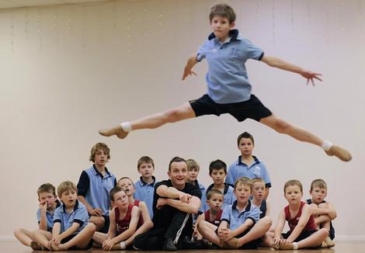
Now that's quite a caper!
Today we feature the fifth in an ongoing series on capers in the Kelso opening, taken from Willie Ryan's classic Tricks Traps & Shots of the Checkerboard. There's a lot of action in this one and we think it's as good as the dance caper shown above.
Here's the runup, without commentary. (Annotations are presented in previous columns in this series.)
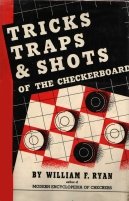
| 1. | 10-15 | 22-18 |
| 2. | 15-22 | 25-18 |
| 3. | 6-10 | 29-25 |
| 4. | 11-15 | 18-11 |
| 5. | 8-15 | 25-22 |
| 6. | 4-8 | 21-17 |
| 7. | 9-13 | 23-18 |
| 8. | 7-11 | 26-23 |
| 9. | 5-9 | 30-25 |
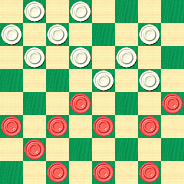
BLACK
Black to Play and Draw
B:W32,31,28,27,25,24,23,22,18,17:B15,13,12,11,10,9,8,3,2,1.
Black has a loose double corner, but there's definitely a draw here, though it's not so easy to get it. Can you find the right move and then correctly play out the rest of the sequence? Willie found one drawing move, but there are actually two--- not that that helps very much.
Don't dance around; jump right in and find the solution, then leap to Read More to see Willie's answer and commentary.![]()
Researching Macindoe

The Macindoe Research Facility is a state of the art establishment focusing on digital literacy. It's part of the Presbyterian Ladies' College in Croydon, New South Wales, Australia. We don't know which Macindoe the facility is named for, but by all accounts this is a leading research center not just in Australia but in the world.
Would there be any relationship to checkerist J. B. Macindoe, who lived something like a century and a half ago in Montreal, Canada? It's possible, we suppose. Do they study checkers and draughts at the Macindoe Research Facility? While we'd like to think so, we're not sure it's part of their mission, but we can always hope.
Today's Checker School entry, certainly, is worthy of serious study by serious students. Here's the position.
WHITE
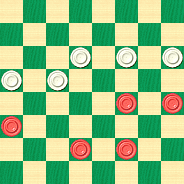
BLACK
Black to Play and Draw
B:W23,22,21,20,19:B14,13,12,7,6.
A textbook ending? Indeed it is. Do your own research--- mentally, of course--- and see if you can solve it. Then, click on Read More for the customary detailed notes, solution, and sample games.![]()
The Fastest Speedster Ever

The fastest speedster in the world is supposedly the Hennessey Venom GT, which reached a measured speed of 270.49 miles per hour in 2014, although there's one little hitch. It didn't go into the record books because the run was made in only one direction; apparently, an official record for a production car requires the averaging of two runs in opposite directions. You can buy one of these, by the way, for around a million dollars.
Today we present what is probably the easiest problem we've ever published in the more than ten year history of The Checker Maven. Naturally, we're offering it as a speed problem, and here too there's one little hitch.
We're giving you just three seconds to solve it. But at least it won't cost you anything.
If you're an expert player, you'll get it in a fraction of a second. The rest of us might need a couple of seconds. And even if you don't get it in three seconds, you'll get it before long.
Click on the link below when you're ready, and keep your eyes wide open! Come back and click on Read More to verify your solution.
April Speed Problem (Very easy, three seconds)
![]()
How Bad Can It Get

The famous expression is "The money runs out before the month does." At times, it can get really bad. We've probably all known the feeling.
But can it get even worse? No, we're not trying to drive our Checker Maven readers into depression. There are times, though, when the only thing to do is sit back and have a good laugh.
Here's a checker position in which the idea is to make things as bad as they possibly can get. Not just a little bad, but really bad.
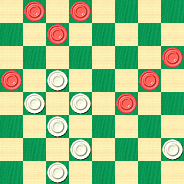
WHITE
White to Play Worst Possible Move
W:W30,28,26,22,18,17,14:B19,16,13,12,6,2,1.
Today's challenge is to pick out the worst possible move on the board. Believe it or not, there's a move here that's so bad ... well, you'll see. (Optimists take note: you can also go ahead and find the best move if you wish.)
Find the worst move and then click on Read More to find out how bad things can be. You're bound to get a laugh, and you're certain to realize that, whatever your own problems may be, they likely have a solution.![]()
Fifth Position
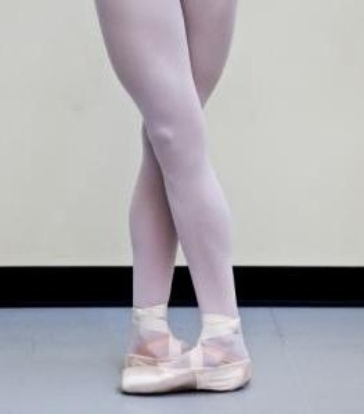
If you're a ballet student of any standing, you've certainly encountered "fifth position," as shown above. It's one of the basics that every aspiring ballet dancer must learn.
Checkers, too, has Fifth Position, and it requires mental effort similar to the physical effort required for ballet's position of the same name. Yes, we've seen Fifth Position in our columns before, but perhaps not to quite the depth of today's lesson in Checker School.
Here's the basic premise.

BLACK
Black to Play and Draw
B:W23,22,21,20,19:B14,13,12,11,6.
Even if you've done it before, it's worth another try. Solve it, then click on Read More to see the solution and the heart of this study: six sample games that lead to Fifth Position.![]()
Capers on the Kelso, Part 4
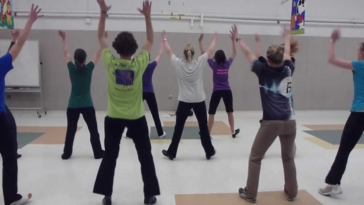
During your school days, did you ever "cut a caper" like the kids above are doing? They seem to really be enjoying their dance class.
This week continues our equally enjoyable checker series, Capers on the Kelso, taken from Willie Ryan's famous Tricks Traps & Shots of the Checkerboard. We're deep into a variation off the main line in which Willie has highlighted an interesting problem-like position.
The uncommented run-up follows below. For complete notes, see the previous columns in this series.

| 1. | 10-15 | 22-18 | |
| 2. | 15x22 | 25x18 | |
| 3. | 6-10 | 29-25 | |
| 4. | 11-15 | 18x11 | |
| 5. | 8x15 | 25-22 | |
| 6. | 4-8 | 21-17 | |
| 7. | 9-13 | 23-18 | |
| 8. | 7-11 | 26-23 | |
| 9. | 5-9 | 24-20 | |
| 10. | 1-5 | 28-24 | |
| 11. | 9-14 | 18x9 | |
| 12. | 5x21 | 23-19 | |
| 13. | 2-6 | 27-23 | |
| 14. | 3-7 | ||
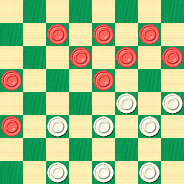
WHITE
White to Play and Draw
W:W32,31,30,24,23,22,20,19:B21,15,13,12,11,10,8,7,6.
White is a piece down, but the draw is there, although White will have to make a number of star moves and "toe the line" pretty closely.
Is this too big a caper to pull off, or can you do it? Give it a couple of turns, and then click on Read More to see the solution and notes.![]()
The Slowest Speed Problem

We thought for a while before declaring today's offering a "speed problem." It's probably the "slowest" speed problem we've published to date, and the proposed solution time of 45 seconds reflects our view of its difficulty.
Now, some of you will undoubtedly see it right away and solve it in just a few seconds. But we think that for most players, a little thought will be necessary.
Click below to display the problem and start the clock.
March Speed Problem (45 seconds, difficult)
When you're done, come back and click on Read More to check your solution.![]()
The Single(s) Corner

Not what you expected, was it?
No, The Checker Maven isn't about to write about dating sites or singles' bars.
Singles? Vinyl? 45 RPM? Anyone else remember those? We'll bet many of our readers do. There was the three-minute long "hit" on the "A" side and something obscure on the "B" side, which most of us didn't listen to more than once or twice.
Today we're scratching into, you guessed it, the Single Corner opening. Here's the run-up to the diagram below.
11-15 22-18 15x22 25x18 8-11 29-25 4-8 24-20 10-15 25-22 12-16 21-17 8-12 17-13 7-10 27-24 9-14 18x9 5x14 32-27 3-7 30-25---A 16-19 23x16 12x19 27-23 (see diagram)
A---Loses. 24-19 draws. If you want more of a challenge, stop here and show the Black win.
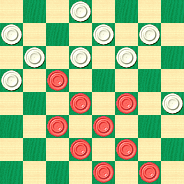
BLACK
Black to Play and Win
B:W31,28,26,25,24,23,22,20,13:B19,15,14,11,10,7,6,2,1.
Left at this stage, the problem isn't especially hard. As in traditional singles, it's the first move-- the "A" side, if you will--- that counts. Take a spin at it, then drop the mouse on Read More to see how your solution sounds.![]()
Traffic Jam

Paradise has a price. A surprising fact is that Honolulu traffic is second only to Los Angeles in the United States. The photo above tells it all as we see an all too common jam-up on the H1 highway.
We've just given you a big hint, by the way, to the solution of today's Checker School problems. And here's another hint: solve the second one first. These aren't especially easy, so be patient and persevere, just as you would have to do in a traffic jam.
WHITE

BLACK
Black to Play and Win
B:W21,K15,13,12,K8:BK22,K16,14,6,3.
WHITE
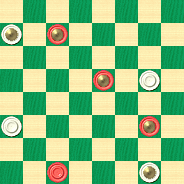
BLACK
Black to Play and Win
B:WK28,17,12,K1:BK27,K18,K9,3.
Don't get yourself in a jam; solve the problems and then jam that mouse down on Read More to see the solutions, sample games, and explanatory notes.![]()
Presidents' Day

We wonder--- how many readers can recall the origin of Presidents' Day?
The older among us will recall the February 22 celebration of Washington's Birthday, and perhaps the February 12 celebration of Lincoln's Birthday in some states such as Illinois. Observation of Washington's Birthday goes back to the 1800s, in fact, becoming a Federal holiday in 1879.
But at some point in the 1960s a movement began for more three-day weekends, and finally in 1971 Washington's Birthday began to officially be observed on the third Monday in February. By the 1980s, the name "Presidents' Day" was in common use.
The holiday is now intended to honor all of our Presidents. And that points out one thing about America: we're all free to like or dislike our President as we see fit--- and be as open as we want about it--- but the Office of the President deserves the greatest of respect.
Today we're featuring a checker problem derived from a book published back in 1886.
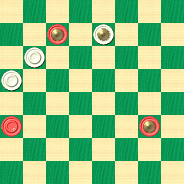
BLACK
Black to Play and Win
B:WK26,24,20:BK27,12,K9.
Naturally, we challenge you to solve this problem, but first, can you quickly say who was President in 1886? Not so easy, is it?
When you've solved the problem (or not) and named the President (or not), click on Read More to see the solutions.![]()
The Checker Maven is produced at editorial offices in Honolulu, Hawai`i, as a completely non-commercial public service from which no income is obtained or sought. Original material is Copyright © 2004-2025 Avi Gobbler Publishing. Other material is public domain, AI generated, as attributed, or licensed under CC1, CC2,CC3 or CC4. Information presented on this site is offered as-is, at no cost, and bears no express or implied warranty as to accuracy or usability. You agree that you use such information entirely at your own risk. No liabilities of any kind under any legal theory whatsoever are accepted. The Checker Maven is dedicated to the memory of Mr. Bob Newell, Sr.

